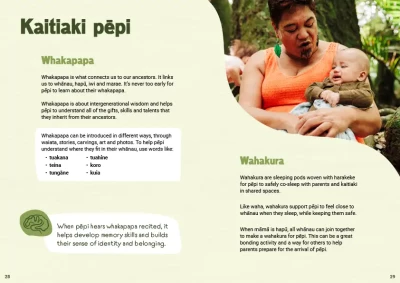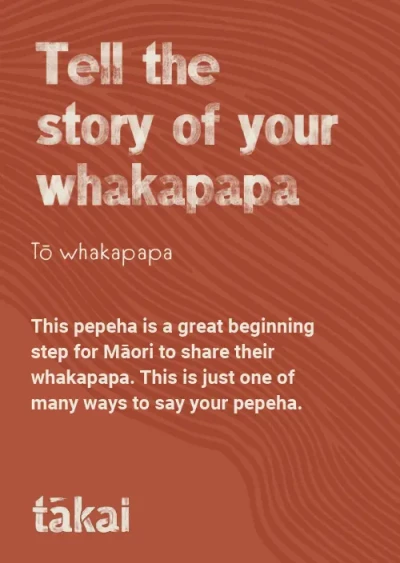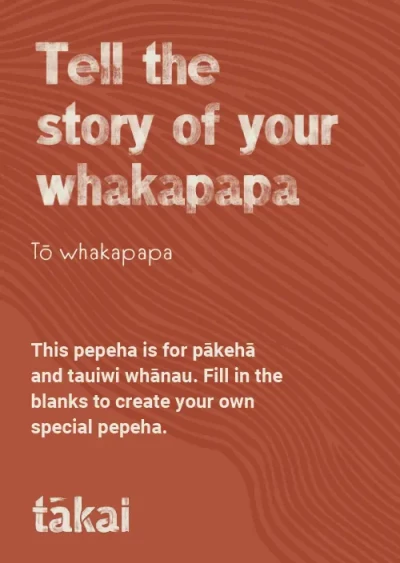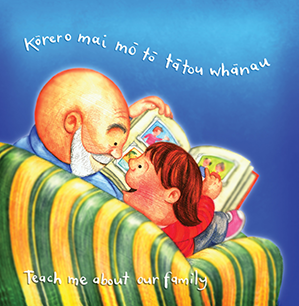
Whakapapa – Ko wai au?
Whakapapa connects all people to their ancestors and to their environment. It’s never too early for pēpi to learn about their whakapapa.
Whakapapa is about intergenerational wisdom. It helps pēpi to understand all of the gifts, skills and talents that they inherit from their ancestors.
Whakapapa is genealogy, a line of descent from ancestors down to the present day. Whakapapa links people to all other living things, and to the earth and the sky, and it traces the universe back to its origins.
Te Ara, The Encyclopedia of New Zealand
Belonging in the world
When we talk about our whakapapa, we reflect on where our family comes from. We will often use our pepeha to introduce ourselves. In our pepeha part of our identity is defined by our maunga , our mountain. The whakataukī below suggests that by physically returning to our maunga, or reflecting upon the lands where our whānau is from, we are establishing where we ‘belong’ in the world.
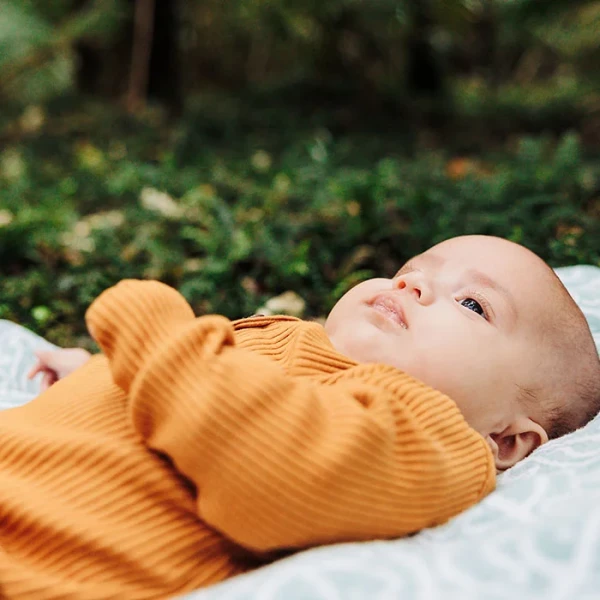
Hokia ki ō maunga kia pūrea koe e ngā hau a Tāwhirimātea.
Mana whenua
This sense of belonging to whānau extends to the land – mana whenua. In traditional times, mana whenua referred to authority over land and land-based resources. It was associated with the life-sustaining role that the land had in providing food, shelter and security.
Now, mana whenua can also represent the sense of belonging a person has to familiar places, whether natural or made by humans. It is similar to the feelings associated with the ancient concepts around ownership of land – a sense of safety, confidence and intimacy from knowing home and whānau boundaries. It makes for a safe and secure world.
Returning babies’ whenua (afterbirth) back to the ancestral whenua (land) is a traditional Māori practice. Whenua ki te whenua.
Whangai
For a variety of reasons, a child may not grow up with their birth parents. Traditionally, the first child was often raised by grandparents, aunts or uncles. This would usually take place within the whakapapa whānau, with children knowing who their birth parents were. This practice is called ‘whangai’. It still happens today and may take place outside the whakapapa whānau.
The pakiwaitara The legend of Māui-tikitiki-a-Taranga in Te Pihinga 1 is an example of whangai. Are whānau familiar with this pakiwaitara? Talk about the message at the bottom of the story, “Learning whakapapa gives pēpi a sense of belonging to their whole whānau.”
Learning about whakapapa
Whakapapa can be introduced in different ways, through waiata, stories, carvings, art and photos. To help pēpi understand where they fit in their whānau, use words like:
- tuakana
- teina
- tungāne
- tuahine
- koro
- kuia
Often people have family photos on the wall or in an album. These can be great resources for learning about whakapapa.
Conversation ideas
Whakapapa tree
A whakapapa tree can be a useful tool. Ask parents if they’d like to fill in some of the names on a tree for pēpi. Start with their pēpi and then write in the names of the people they know. Talk about who the people are and how they are connected.
Other ways whānau could help pēpi learn their whakapapa include:
- Put together your whakapapa using photos of your maunga, awa , marae and wharenui .
- Make a mobile for pēpi depicting their pepeha.
Helpful resources for whānau
-
Whakapapa
National Library of New Zealand
A guide on whakapapa research resources available online from the National Library of New Zealand and elsewhere.
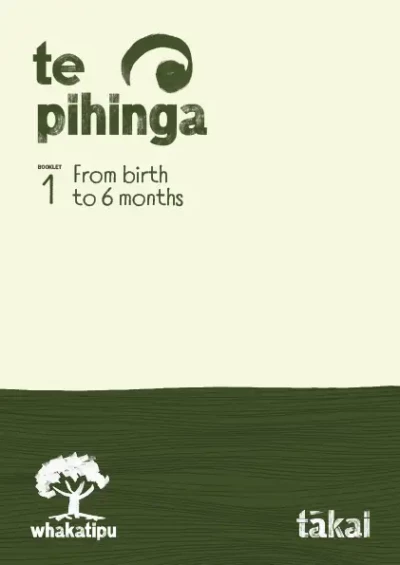 pdf 11 MB
pdf 11 MB
